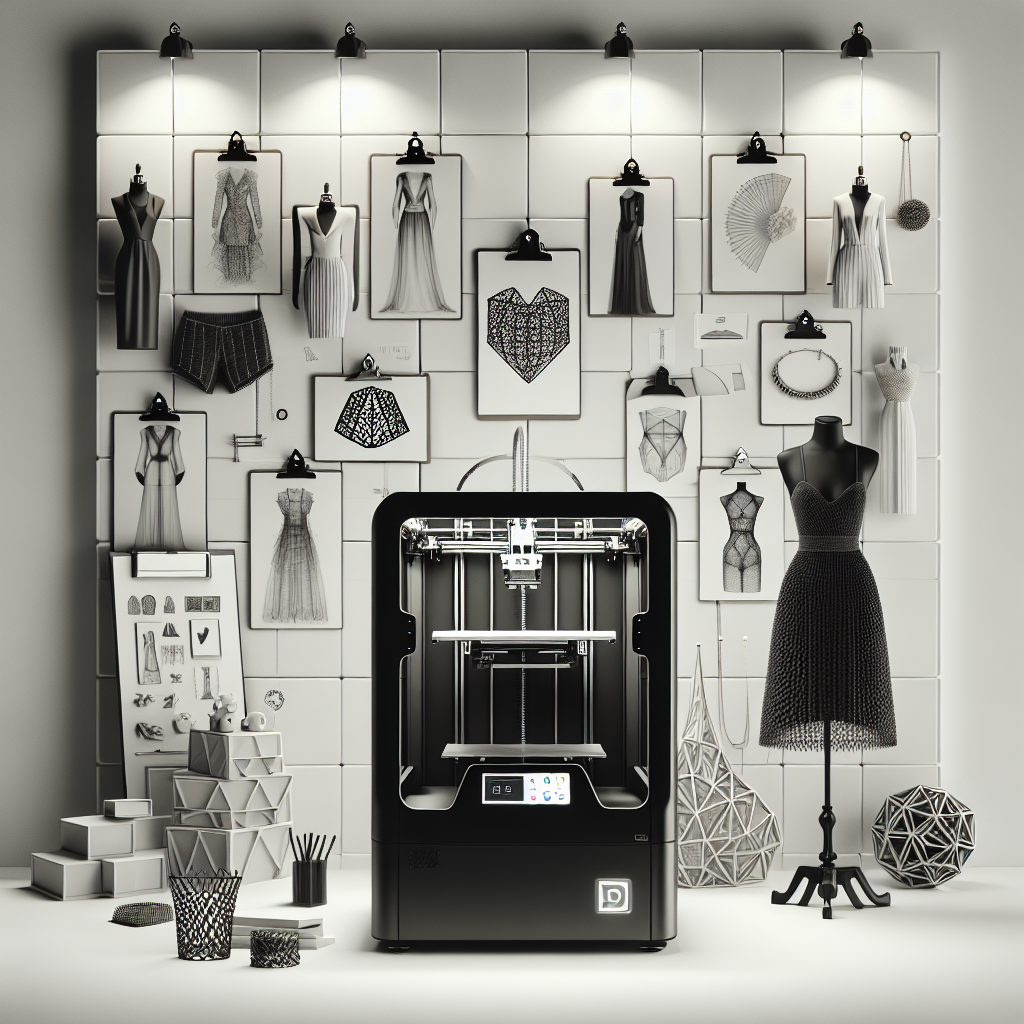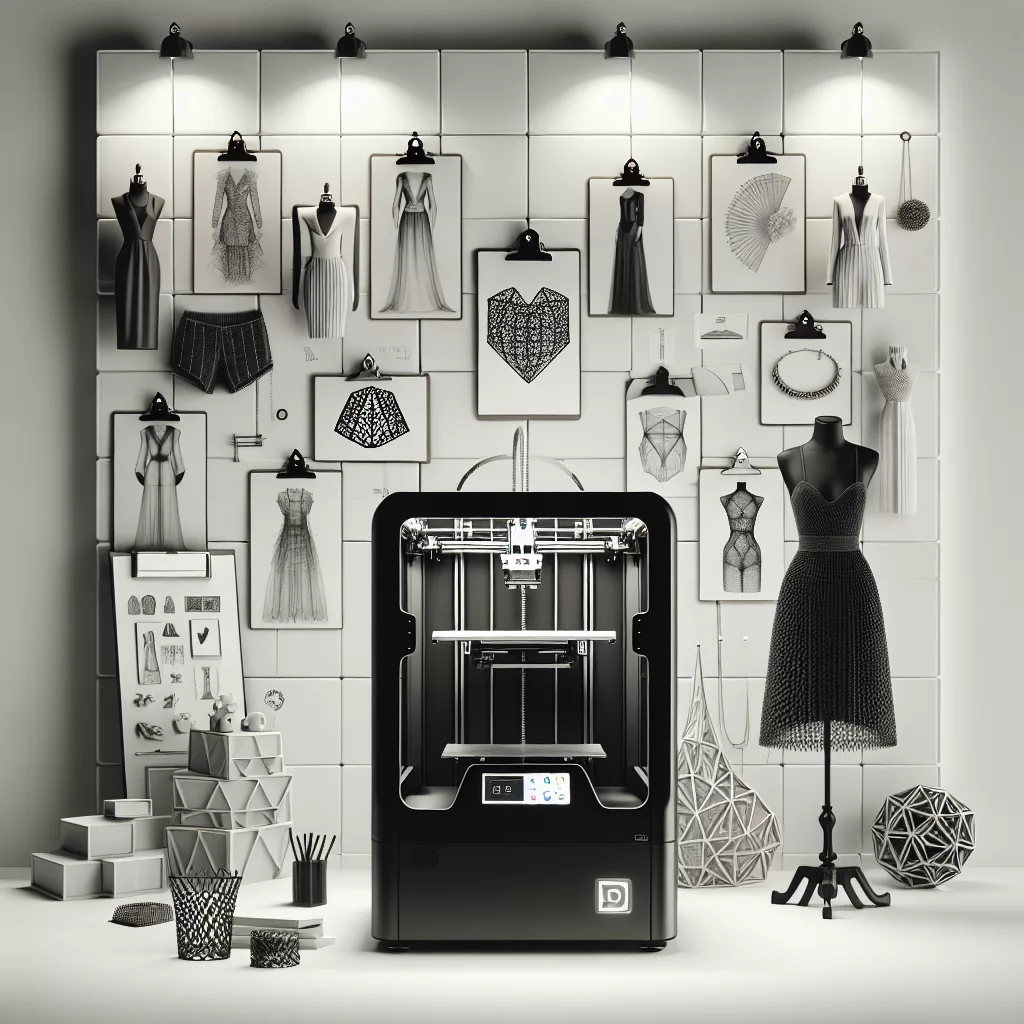Introduction
3D printing, also known as additive manufacturing, has become one of the most groundbreaking innovations in recent years, especially in the fashion industry. By offering designers unprecedented creativity, personalization, and efficiency, 3D printing is reshaping how fashion collections are created, prototyped, and produced. From sustainable accessory production to intricate clothing designs, this technology is rapidly redefining fashion boundaries and pushing designers’ creativity to new heights.
Unlocking Creative Possibilities for Designers
Traditionally, fashion design involves multiple stages of sketching, prototyping, and production, often limiting designers to materials and techniques that are both costly and time-consuming. 3D printing technology removes these barriers by enabling designers to digitally craft their ideas and quickly produce detailed prototypes. This not only accelerates creative exploration but also allows for the realization of complex geometries and structures that were previously unimaginable. Designers can now experiment freely, bringing to life unique shapes, intricate patterns, and personalized items that traditional methods cannot easily replicate.
Reducing Waste and Enhancing Sustainability
The fashion industry has faced prolonged scrutiny due to its environmental impact, particularly regarding waste generated through textile production and excessive material usage. By embracing additive manufacturing, designers are able to significantly reduce waste by producing garments layer-by-layer, using precisely the amount of material required. Additionally, 3D printing allows the use of recyclable and biodegradable materials, further enhancing the sustainability of fashion items. The ability to print materials on-demand dramatically reduces leftover inventory and minimizes environmental harm.
Customization and Personalization at Scale
Consumers today increasingly seek fashion that expresses individuality and uniqueness. 3D printing technology facilitates mass customization by enabling designers to adapt designs for individual needs quickly and affordably. Customers can have fashion items tailored precisely to their measurements, preferences, or even specific tastes, providing an unprecedented level of personalization previously unattainable at scale. Brands like Adidas and Nike have already demonstrated successful personalized footwear lines, paving the way for future customized apparel and accessories as standard offerings.
Innovative Materials and Techniques
3D printing is not only limited to plastics—today’s advances in additive manufacturing include various innovative materials like flexible polymers, metals, ceramics, and biodegradable composites. Designers have begun exploring applications such as fabric-like textures printed from flexible filaments, intricate metal jewelry produced via selective laser melting, and even leather alternatives derived from plant-based materials. These innovations expand fashion boundaries, paving the way for garments that are as durable and comfortable as they are stylish and forward-thinking.
Revolutionizing Fashion Shows and Retail Experiences
Fashion shows and retail experiences are evolving dramatically thanks to 3D printing. Designers can now produce one-off pieces quickly for runway displays or marketing brilliance, vastly reducing lead times and costs associated with traditional garment manufacturing. Retailers can offer customers rapid, on-site customization or personalized fitting experiences using 3D scanners and printers. Immersive technology merges seamlessly with additive manufacturing, creating an entirely new shopping experience that blends digital fantasy and tangible fashion reality.
Empowering Small and Independent Fashion Designers
Previously, smaller designers and fashion startups faced hurdles due to high production costs and limited resources. However, 3D printing has democratized fashion manufacturing, allowing independent designers to compete with larger brands without massive upfront investments. By minimizing the need for outsourcing production and enabling small-scale, quick-turnaround manufacturing, designers can now rapidly prototype, test, and bring their creative visions directly to the market, expanding their reach and creativity.
The Future of 3D Printing in Fashion
As additive manufacturing technology continues to advance, its potential within fashion grows exponentially. Future developments could include fully printed wearable electronics, smart fabrics, and garments capable of adapting to environmental conditions or consumer preferences in real-time. Additionally, the rise of home-based 3D printing may empower fashion enthusiasts to create and print their clothes at home, truly revolutionizing the way clothing is produced, distributed, and consumed.
Conclusion
The integration of 3D printing technology into the fashion industry is undeniably transformative. From sustainability and customization to empowering independent designers and innovation in materials, additive manufacturing has opened new horizons for fashion. The future promises more exciting advancements, positioning 3D printing as a cornerstone of fashion industry evolution and redefining the very nature of how we design, manufacture, and wear clothing.


Leave a Reply